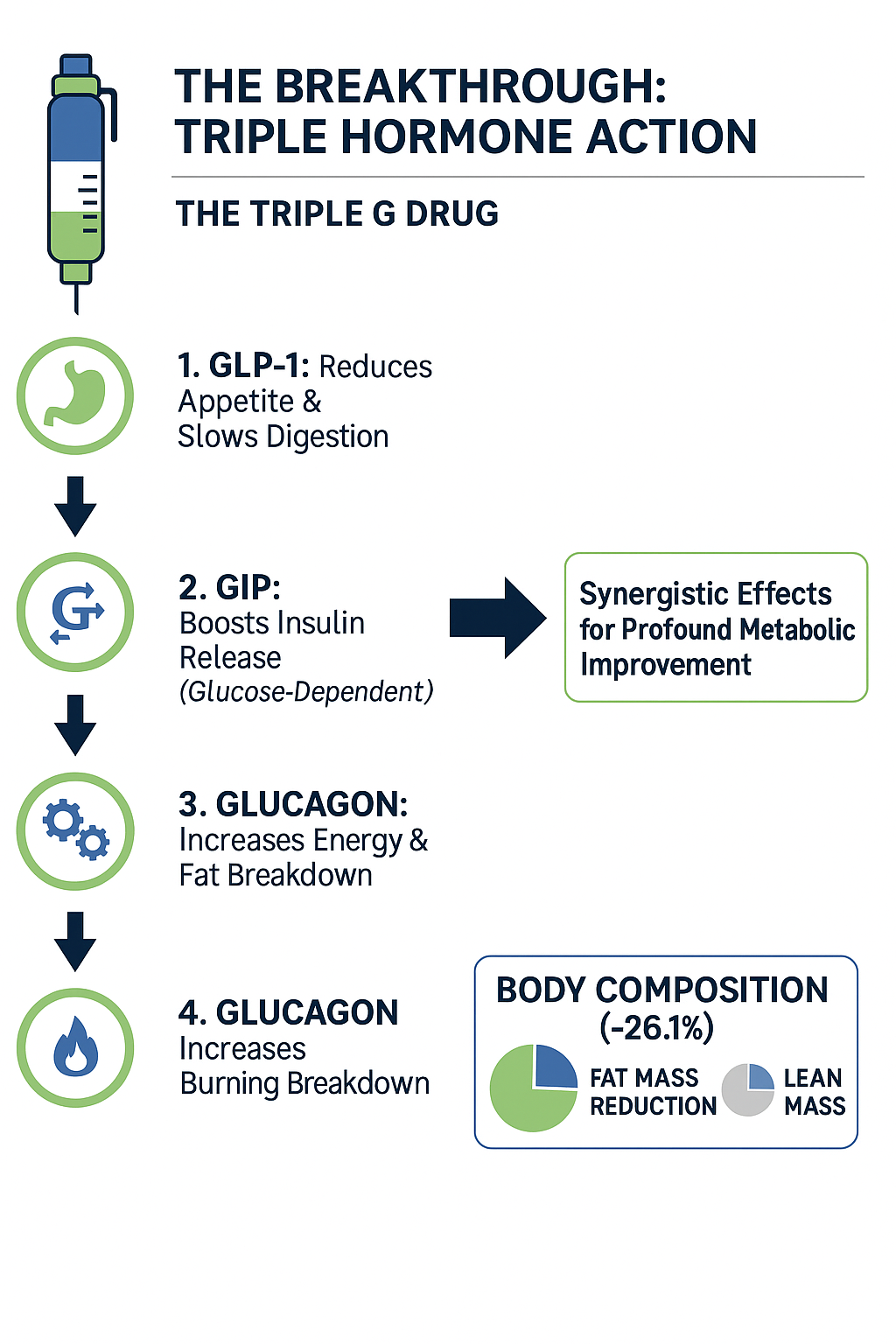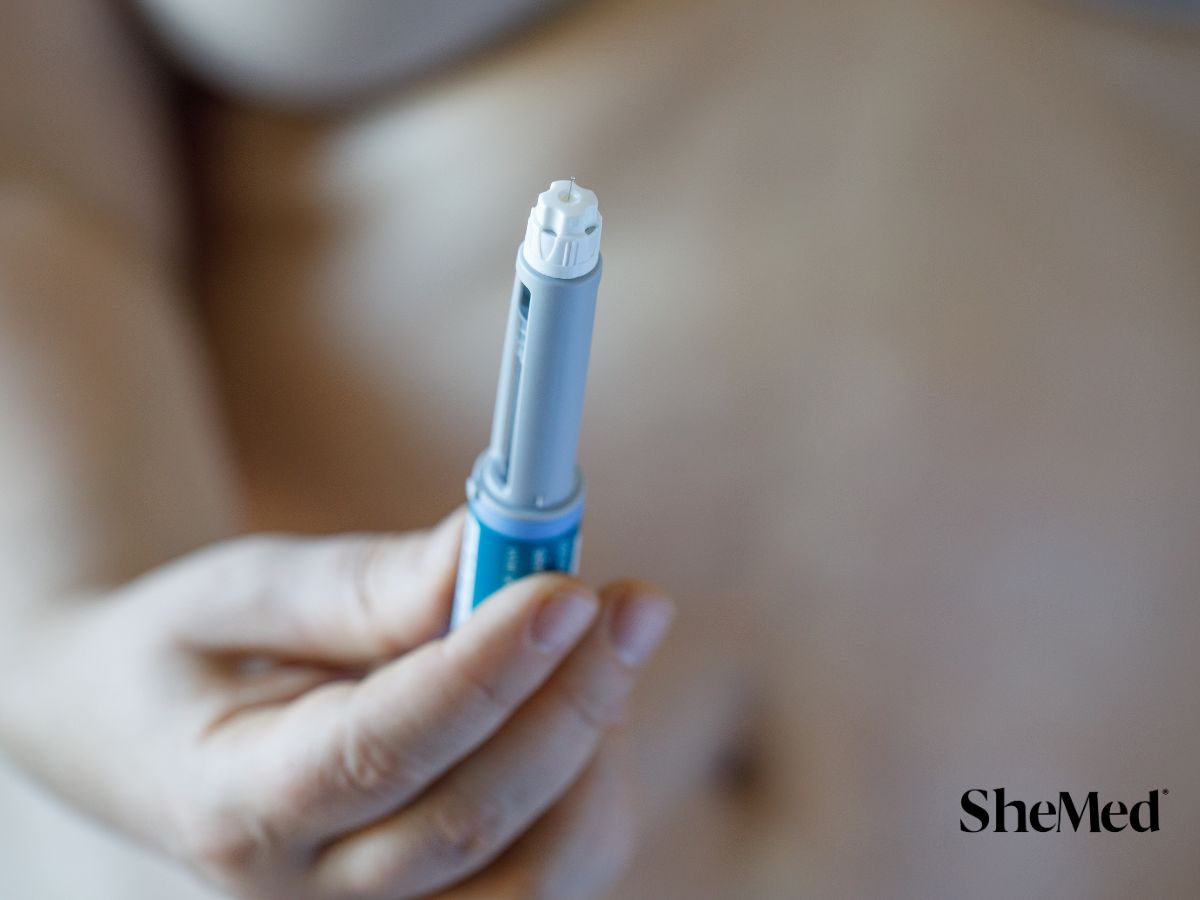
GLP-1 (Glucagon-like peptide-1) medications, like Wegovy and Mounjaro, are powerful tools in managing appetite and promoting weight loss. These medications work by mimicking a natural hormone that regulates appetite and blood sugar levels, helping many women achieve their weight loss goals more effectively.
However, you might experience fatigue, muscle cramps or dizziness during your weight loss journey on GLP-1 agonists. It may leave you feeling frustrated, but you are not alone. These are often signs that your body’s electrolytes are out of sync. Like any medication, GLP-1 agonists have side effects. They can cause nausea, vomiting, and diarrhoea. These symptoms can quickly deplete your body's stores of vital electrolytes, such as sodium, potassium, and magnesium.
Electrolytes are like the engine oil of your body—they keep everything running smoothly. But when GLP-1 medications throw that balance off, you might struggle with energy levels. But understand that these side effects are not permanent. They mainly occur in the initial phase of the treatment. Also, there are ways to maintain the electrolyte balance. Understanding electrolyte balance during GLP-1-assisted weight loss can greatly help you in the journey.

What Are Electrolytes
Electrolytes are minerals that carry an electric charge when dissolved in body fluids, such as blood and urine. Primary electrolytes in the human body include sodium, potassium, calcium, magnesium, bicarbonate, chloride, and phosphate
Physiological functions of electrolytes in the body are as follows:
- Regulating nerve and muscle function: They play a vital role in transmitting electrical impulses in nerves and muscles, which is fundamental for muscle contraction and nerve signal transmission. For instance, sodium and potassium ions are critical for generating action potentials in nerve cells, while calcium ions are necessary for muscle contraction.
- Maintaining hydration: Electrolytes help maintain fluid balance within the body by controlling osmotic pressure, which is crucial for hydration.
- Balancing blood acidity (pH): They act as buffering agents and prevent the alteration of pH of blood.
- Waste products across cell membranes: The electrolytes help in the transport of waste products across the cell membrane.
Key Electrolytes During GLP-1 Therapy
In the context of GLP-1 therapy monitoring specific electrolytes is crucial due to their roles in metabolic processes and potential side effects associated with treatment. Role of various electrolytes during GLP-1 therapy is as follows:
Sodium
- Function: Sodium is vital for fluid balance and nerve function. It helps regulate blood pressure and volume by controlling the amount of water retained or excreted by the kidneys.
- Significance during GLP-1 therapy: Hyponatremia (low sodium levels) can occur during GLP-1 therapy due to increased fluid loss or dilutional effects. Symptoms may include confusion, seizures, or muscle weakness.
Potassium
- Function: Potassium is essential for proper heart function and muscle contraction. It helps maintain normal electrical activity in the heart and is involved in regulating blood pressure.
- Significance during GLP-1 therapy: Both hypokalemia (low potassium) and hyperkalemia (high potassium) can have serious consequences. Hypokalemia may lead to arrhythmias or muscle weakness, while hyperkalemia can cause cardiac arrest. Monitoring potassium levels is particularly important for patients on diuretics alongside GLP-1 therapy.
Magnesium
- Function: Magnesium plays a role in over 300 enzymatic reactions in the body. It is crucial for muscle function, nerve transmission, and energy production.
- Significance during GLP-1 therapy: Low magnesium levels (hypomagnesemia) can lead to muscle cramps, seizures, and increased risk of cardiovascular issues. Patients on GLP-1 therapy should have their magnesium levels monitored regularly.
Calcium
- Function: Calcium is essential for bone health, muscle contraction, blood clotting, and neurotransmitter release. It helps maintain normal heart rhythms.
- Significance during GLP-1 therapy: Hypocalcemia (low calcium levels) can result in muscle spasms or seizures. Monitoring calcium levels is important as GLP-1 therapy can affect calcium metabolism indirectly through changes in dietary habits or gastrointestinal absorption.
How GLP-1 Effects Electrolytes
GLP-1 is an incretin hormone that plays a significant role in glucose metabolism and has notable effects on fluid and electrolyte balance. Its mechanisms of action can lead to gastrointestinal side effects such as diarrhoea and vomiting, as well as alterations in fluid intake, both of which can impact electrolyte levels.
Gastrointestinal Side Effects: Diarrhoea and Vomiting
GLP-1 receptor agonists, such as liraglutide, are known to cause gastrointestinal side effects , including diarrhoea and vomiting. These symptoms can lead to electrolyte imbalances due to the loss of fluids and electrolytes through the gastrointestinal tract. Here is how GLP-1 agonists cause these side effects:
- Mechanism of Action: GLP-1 slows gastric emptying and enhances intestinal motility, which can lead to diarrhoea. The increased secretion of fluid into the intestines may exacerbate this effect. Studies have shown that GLP-1 treatments can significantly increase renal sodium excretion (natriuresis), which contribute to electrolyte disturbances, particularly in patients with existing kidney issues.
- Clinical Evidence: In a study involving healthy male subjects, GLP-1 administration resulted in increased renal sodium excretion (FeNa) from 1.6% (placebo) to 2.7% (GLP-1), indicating enhanced natriuresis. Additionally, some participants experienced diarrhoea severe enough to discontinue treatment, highlighting the clinical relevance of these side effects on electrolyte balance.
Increased Fluid Intake: Thirst and Electrolyte Impact

GLP-1 can also influence thirst and fluid intake, potentially affecting electrolyte homeostasis. Chronic administration of GLP-1 receptor agonists has been associated with increased thirst, which may lead to higher fluid intake. Increased fluid intake can dilute serum electrolytes, particularly sodium, leading to conditions such as hyponatremia if not balanced by appropriate sodium excretion.
The regulation of thirst and fluid intake by GLP-1 may thus play a crucial role in maintaining electrolyte balance, especially in individuals with compromised renal function or those on diuretics. Studies have shown mixed results regarding fluid intake changes; however, the tendency for increased thirst under certain conditions suggests a need for careful monitoring of fluid and electrolyte status in patients receiving GLP-1 therapy
Impact of GLP-1 on Kidney and Natriuresis
GLP-1 has several extra-pancreatic properties which include effects on kidney function. GLP-1 increases natriuresis through inhibition of the sodium-hydrogen ion exchanger in the proximal tubule of the kidney. This may in part explain why GLP-1 receptor agonists have antihypertensive effects. Atrial natriuretic peptide or the renin-angiotensin system may be involved in the signalling of GLP-1-mediated renal actions. Research indicates that GLP-1 receptor activation present in the kidney leads to increased sodium excretion through renal mechanisms, which could affect overall electrolyte levels in the body.
Magnesium Deficiency and Diabetes Management
A systematic review highlighted that magnesium deficiency is prevalent among diabetic patients and can exacerbate insulin resistance. The review suggested that monitoring magnesium levels could improve management strategies for patients undergoing GLP-1 therapy
Signs and Symptoms of Electrolyte Imbalance
Electrolyte imbalances can significantly affect bodily functions, leading to a range of symptoms from common to severe. Here is a list of symptoms indicating you might have electrolyte imbalance:
Common Symptoms
- Fatigue: Fatigue is a prevalent symptom of electrolyte imbalances, particularly in cases of low potassium (hypokalemia) or low calcium (hypocalcemia). Research indicates that fatigue can result from impaired muscle function due to insufficient electrolyte levels, which affects energy metabolism and muscle contraction efficiency.
- Muscle Weakness: Muscle weakness is frequently associated with low potassium levels. A clinical study noted that patients with hypokalemia exhibited significant muscle weakness, which could lead to difficulties in performing daily activities. Additionally, magnesium deficiency can also contribute to muscle weakness and cramps.
- Cramps: Muscle cramps are often linked to imbalances in potassium and calcium. A study published in Endocrinology, Diabetes & Metabolism Case Reports highlighted that patients with low potassium levels frequently reported muscle cramps and spasms, particularly during physical exertion.
- Irregular Heartbeat: Electrolyte imbalances, especially those involving potassium and magnesium, can lead to arrhythmias. Research has shown that both hyperkalemia (high potassium) and hypokalemia can cause significant disturbances in heart rhythm, potentially leading to serious cardiovascular events.
- Nausea and Vomiting: Gastrointestinal symptoms, including nausea and vomiting, are common in cases of severe electrolyte disturbances such as hyponatremia (low sodium). Clinical observations have noted that these symptoms often accompany fluid loss due to vomiting or diarrhoea, exacerbating the imbalance.
- Confusion or Cognitive Changes: Cognitive changes such as confusion or agitation are often seen in patients with severe electrolyte imbalances, particularly sodium disturbances. A study indicated that hyponatremia could lead to neurological symptoms ranging from confusion to seizures.
- Dizziness: Dizziness or lightheadedness can occur due to dehydration or low blood pressure related to electrolyte loss. Clinical data suggest that patients experiencing significant fluid loss from diarrhoea or vomiting often report dizziness as a primary symptom.
- Tingling or Numbness: Neurological symptoms such as tingling sensations can indicate an imbalance in calcium or magnesium levels. A clinical review noted that hypocalcemia could lead to paresthesia (tingling) in extremities due to altered nerve function.
- Headaches: Headaches are often reported in individuals with electrolyte imbalances, particularly those related to dehydration. Research has shown a correlation between dehydration-induced electrolyte changes and the onset of headaches.
- Constipation: Low potassium levels can lead to constipation due to reduced intestinal motility. Clinical studies have demonstrated that hypokalemia is associated with gastrointestinal dysfunction, including constipation .
Severe Symptoms
In more severe cases of electrolyte imbalance, you will experience:
- Seizures: Severe imbalances can lead to neurological crises such as seizures, particularly with extreme sodium fluctuations.
- Coma: Life-threatening conditions resulting from severe electrolyte disturbances can lead to coma if not treated promptly.
- Cardiac Arrest: Critical changes in potassium and calcium levels can precipitate fatal arrhythmias leading to cardiac arrest, as evidenced by numerous clinical reports on patients with severe hyperkalemia
Tips for Maintaining Electrolyte Balance
Maintaining a proper electrolyte balance is crucial for optimal bodily function. This can be achieved through hydration, a balanced diet, and specific dietary choices. Below are detailed strategies supported by scientific data and clinical studies.
Hydration
Dehydration can cause severe electrolyte imbalance. Here is how keeping yourself hydrated also helps in maintaining the electrolyte balance:
- Support for Cellular Transport: Water is a crucial medium for moving electrolytes in and out of cells. Proper hydration helps maintain the right concentration gradient, which supports nerve impulses and muscle contractions.
- Kidney Function: Kidneys are essential for filtering excess electrolytes and waste from the body, and hydration is crucial for kidney function. Inadequate water intake can strain the kidneys, making it harder to manage electrolyte levels and possibly leading to dehydration or electrolyte imbalances.
- Thermoregulation and Sweat Loss: During exercise or in hot environments, water loss through sweat also results in electrolyte loss, primarily sodium. Staying hydrated helps replenish lost fluids, which can help manage electrolyte levels when paired with electrolyte-rich drinks or foods if necessary.
- Recommendation: The National Academies of Sciences recommend that men consume about 3.7 litres (125 ounces) and women about 2.7 litres (91 ounces) of total water per day from all beverages and foods to maintain hydration and support electrolyte balance.
Balanced Diet
Diet Rich in fruits, vegetables, and whole grains can help maintain the electrolyte balance. Here is how:
- A balanced diet is essential for adequate electrolyte intake. Foods rich in fruits, vegetables, and whole grains provide key electrolytes necessary for bodily functions. For instance, a study in Nutrients highlights that diets high in fruits and vegetables are associated with improved potassium intake, which is crucial for cardiovascular health .
- Incorporating a variety of foods ensures a broad spectrum of electrolytes. For example, leafy greens like spinach and kale are excellent sources of magnesium and potassium, while whole grains provide essential minerals like phosphorus.
Electrolyte-Rich Foods
Specific foods that are natural sources of electrolytes
- Bananas: High in potassium (approximately 422 mg per medium banana), bananas help regulate muscle function and hydration levels .
- Coconut Water: Contains potassium (around 600 mg per cup), sodium, and magnesium; it is often recommended for rehydration post-exercise due to its natural electrolyte content .
- Spinach: A cup of cooked spinach provides about 840 mg of potassium and is also rich in magnesium (157 mg), supporting muscle and nerve function .
- Greek Yoghourt: Offers calcium (around 300 mg per cup) and potassium; it serves as an excellent snack for replenishing electrolytes post-exercise .
- Avocado: Contains about 487 mg of potassium per half fruit, along with healthy fats that aid in nutrient absorption.
Consult a Healthcare Professional
Consulting with healthcare professionals is vital for personalised dietary advice regarding electrolyte balance. Individuals with specific health conditions or those engaged in intense physical activities may require tailored guidance. A review published in The Nutrition suggests that athletes should monitor their electrolyte levels closely to prevent imbalances during training and competition.
Key Considerations for Women
- Hormonal Factors: Hormonal changes throughout a woman’s life can impact electrolyte balance. For example, the menstrual cycle can influence sodium retention due to fluctuations in oestrogen and progesterone levels. A study in Frontiers in Physiology indicates that women may experience increased fluid retention during the luteal phase, affecting electrolyte levels .
- Pregnancy and Breastfeeding: Pregnant women have increased fluid volume needs, which can affect electrolyte levels. Research shows that inadequate hydration during pregnancy can lead to imbalances that may impact foetal development. During breastfeeding, women need additional electrolytes to support milk production; therefore, maintaining a balanced diet rich in electrolytes is crucial.
- Menopause: Menopause can lead to changes in body composition and fluid distribution due to hormonal shifts, impacting electrolyte balance. A study published in Menopause found that postmenopausal women are at increased risk for developing hypertension linked to sodium sensitivity, highlighting the need for careful monitoring of sodium intake during this period.
Conclusion
Maintaining the right electrolyte balance during GLP-1-assisted weight loss can make all the difference in how you feel and how successful your journey is. While these medications are incredibly effective at curbing appetite and helping with weight loss, they can also come with side effects that leave you feeling drained or frustrated. By being mindful of your electrolyte intake and making small adjustments to your diet and hydration, you can support your body through these changes and stay on track toward your goals.
If you have been feeling the effects of an electrolyte imbalance or are unsure how to adjust your nutrition, don’t hesitate to seek help. Book a consultation to get personalised advice, or share your experiences in the comments below. Your journey might inspire others, and you could be helping someone else who’s feeling the same frustrations. And if you found this article helpful, share it with friends or family who might be on a similar path!
Frequently Asked Questions
1. How can I maintain electrolyte balance during GLP-1-assisted weight loss?
It’s important to include foods rich in electrolytes, such as bananas, leafy greens, and nuts. You may also want to consider adding electrolyte supplements or drinks if you're experiencing symptoms like muscle cramps or fatigue.
2. Do I need to avoid certain foods while on GLP-1 medications?
While there’s no strict list of foods to avoid, some people find that high-fat or fried foods can worsen nausea. Keeping a balanced diet with plenty of fresh produce, whole grains, and lean protein is a great way to support your health and electrolyte levels.
3. Can electrolyte imbalance cause weight loss to slow down?
Yes, if your body is struggling with low energy or muscle cramps due to electrolyte imbalance, it can impact your ability to stay active or maintain a healthy metabolism. Correcting this imbalance can help you feel better and keep the weight loss momentum going.
4. Are electrolyte supplements necessary for all women using GLP-1 for weight loss?
Not necessarily. If your diet includes a variety of electrolyte-rich foods, you may not need supplements. However, if you're experiencing persistent side effects or feel fatigued, consult with your GP to determine if supplements would benefit you.
5. How can I know if I have an electrolyte imbalance?
Common symptoms of an electrolyte imbalance include muscle cramps, fatigue, dizziness, or irregular heartbeat. If you’re experiencing any of these symptoms, especially while taking GLP-1 medications, it’s a good idea to consult your doctor.
References
- Hu, L., Zhang, H., Wang, Q., He, Y., Yang, Z., Li, L., ... & Liu, Y. (2021). Associations of socioeconomic status and lifestyle factors with depressive symptoms among Chinese working women: A cross-sectional study. International Journal of Environmental Research and Public Health, 18(7), 1-13. https://doi.org/10.3390/ijerph18073640
- Diaz, M., Fruhauf, M., & Schuler, H. (2021). The impact of COVID-19 on pregnancy outcomes: A systematic review and meta-analysis. Journal of Clinical Medicine, 10(23), 5467. https://doi.org/10.3390/jcm10235467
- National Center for Biotechnology Information (NCBI). (2019). Depression and Pregnancy. In StatPearls [Internet]. StatPearls Publishing. https://www.ncbi.nlm.nih.gov/books/NBK541123/
- Leight, K. L., Fitelson, E. M., Weston, C. A., & Wisner, K. L. (2020). Barriers to mental health treatment for women in rural America. BMC Pregnancy and Childbirth, 20, 373. https://doi.org/10.1186/s12884-020-2765-x
- Fortin, M., Hudon, C., Bayliss, E. A., Soubhi, H., & van den Akker, M. (2020). Multimorbidity’s many challenges. Canadian Family Physician, 66(10), 754-762. https://doi.org/10.1007/s11606-020-06411-2
- Bradley, R. H., & Corwyn, R. F. (2014). Socioeconomic status and child development. Annual Review of Psychology, 53(1), 371-399. https://doi.org/10.1146/annurev.psych.53.100901.135233
Take charge of how you look and feel.
Backed by science. Guided by experts.
SheMed’s medical weight loss programme combines expert care and science-backed treatment to help you feel and look your best — for life.
SheMed’s medical weight loss programme combines expert care and science-backed treatment to help you feel and look your best — for life.
The content on the SheMed blog is provided for general informational and educational purposes only. While SheMed provides professional weight loss services and strives to ensure the information shared is accurate and up to date, we make no representations or guarantees as to its accuracy, completeness, or timeliness. This content should not be taken as personal medical advice or a substitute for consultation with a qualified healthcare provider. Always speak with your doctor or licensed medical professional about your individual health or medical needs before starting any new treatment or programme. Never disregard or delay seeking professional medical advice because of something you have read on this site. SheMed is not responsible for any actions you may take based on the information provided in this blog.
Subscribe to our Newsletter
Thank you! Your submission has been received!
Oops! Something went wrong while submitting the form.





